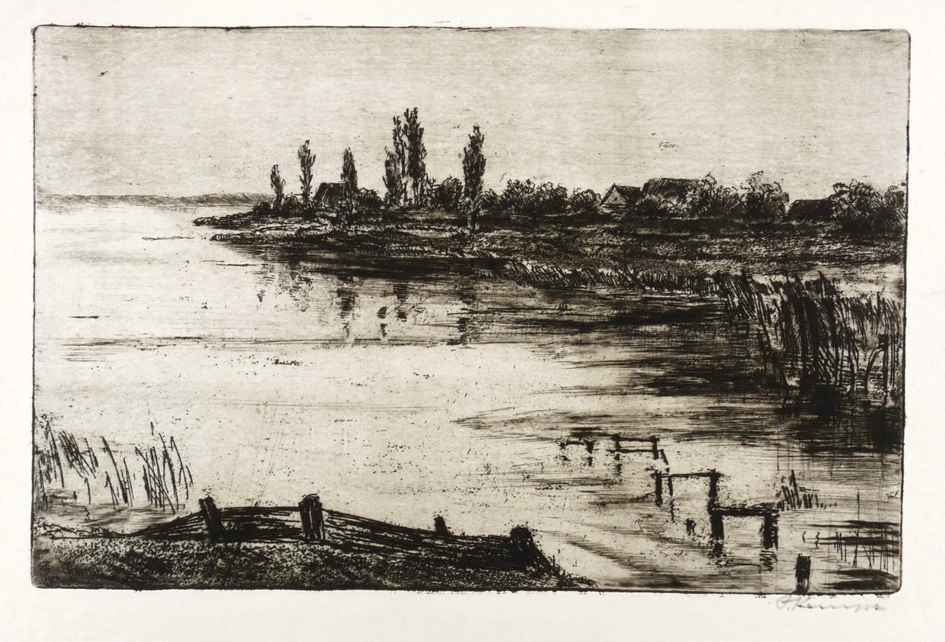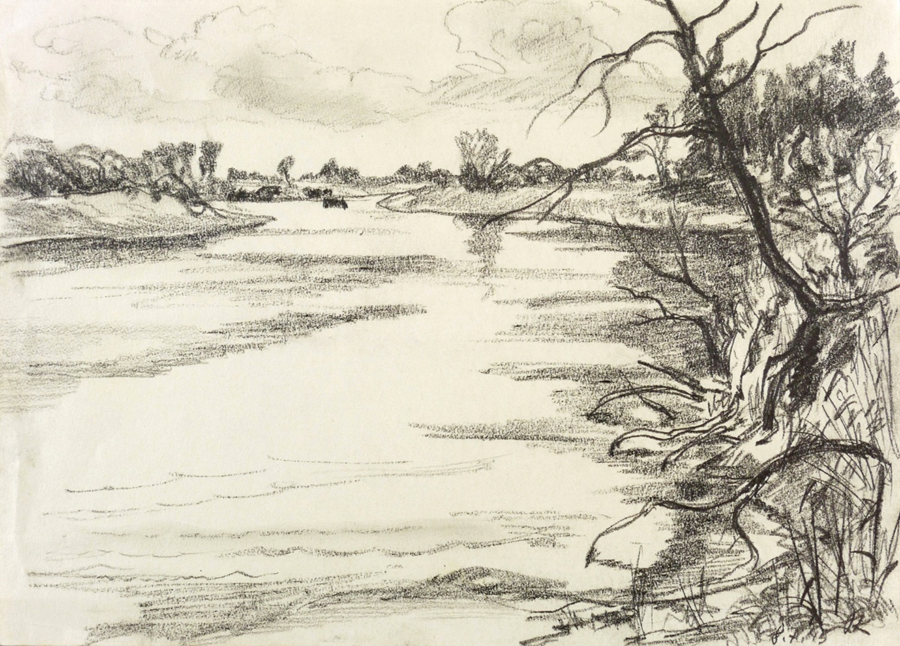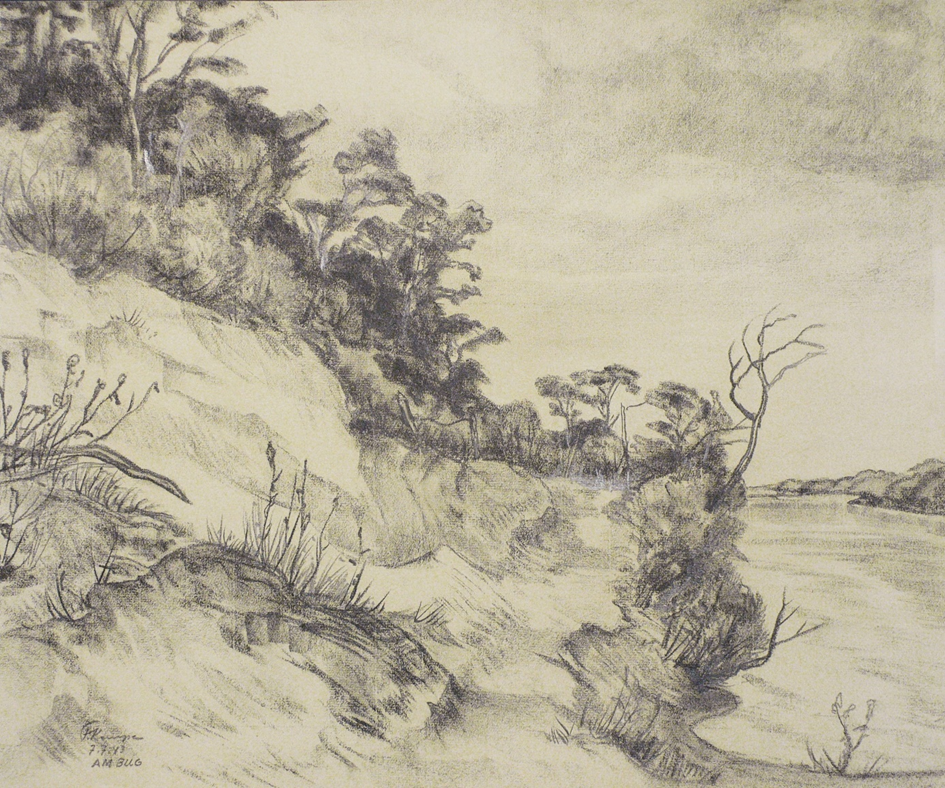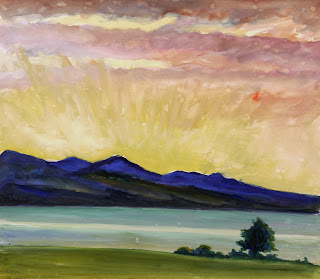Is it worth collecting poster stamps?
© Andrzej
Philips
 Poster stamps, also known as Cinderella stamps,
hold a unique place in the world of philately. Unlike traditional postage
stamps issued by postal authorities for the purpose of mailing, poster stamps
are primarily designed for advertising, promotion, or commemoration. They often
feature colorful designs, artistic illustrations, and thematic imagery, making
them attractive to collectors.
Poster stamps, also known as Cinderella stamps,
hold a unique place in the world of philately. Unlike traditional postage
stamps issued by postal authorities for the purpose of mailing, poster stamps
are primarily designed for advertising, promotion, or commemoration. They often
feature colorful designs, artistic illustrations, and thematic imagery, making
them attractive to collectors.
The term "poster stamp" originated
because these stamps often resembled miniature posters in their design and
aesthetics. Many poster stamps were either “poster-like” in appearance or exact
miniature replicas of larger street posters. Their colorful and detailed
artwork was especially eye-catching during the early 1900s, a time when color
printing was still relatively expensive and not commonly used. This vivid,
poster-like quality made these stamps stand out and quickly catch the public’s
attention.
The decision to collect poster stamps
ultimately depends on individual preferences and interests. Here are some
factors to consider when determining if it's worth collecting them:
1. Historical Significance: Poster stamps offer
insights into various aspects of history, including advertising trends,
cultural movements, and significant events. They can serve as valuable
artifacts, providing a glimpse into the past and shedding light on social,
political, and economic contexts.
2. Artistic Value: Many poster stamps showcase
intricate artwork, innovative designs, and creative concepts. For art
enthusiasts, collecting poster stamps can be a rewarding pursuit, offering
exposure to a diverse range of artistic styles and techniques.
3. Thematic Diversity: Poster stamps cover a
wide range of themes, including sports, entertainment, transportation,
politics, and more. Collectors have the flexibility to focus on specific themes
that align with their interests, allowing for a personalized and diverse
collection.
4. Accessibility: Unlike traditional postage
stamps, which may have limited availability or require significant financial
investment, poster stamps are often more accessible and affordable. They can be
found through various channels, including online marketplaces, stamp shows, and
specialty shops.
5. Community Engagement: Collecting poster
stamps can be a social and community-oriented activity. Enthusiasts have the
opportunity to connect with fellow collectors, attend stamp exhibitions,
participate in trading events, and engage in discussions about their shared
interests.
6. Educational Value: Poster stamps offer
educational opportunities for both collectors and enthusiasts. Researching the
history, context, and significance of poster stamps can enhance one's knowledge
and appreciation of art, culture, and society.
Ultimately, the decision to collect poster
stamps should be driven by personal enjoyment, curiosity, and passion. Whether
you're drawn to their historical significance, artistic appeal, thematic
diversity, or community engagement, collecting poster stamps can be a rewarding
hobby that offers both enjoyment and enrichment.
Poster stamps are a unique category of
philatelic items resembling regular postage stamps but not used for postal
services. They encompass a broad range of subtypes, including revenue stamps
printed by national governments for tax payments, local stamps used for
regional deliveries, and most notably, privately printed stamps for advertising
or propaganda purposes. These privately produced stamps are the primary focus
for collectors and are known as poster stamps in the United States. They are
distinguished by their striking graphic designs, larger sizes, vivid colors,
and bold, eye-catching aesthetics, often mimicking the appearance of full-sized
posters.
The term poster stamp refers to a type of
cinderella stamp that resembles a miniature poster. They are typically used for
advertising, propaganda, or commemorative purposes and are not valid for
postage. Below are translations of poster stamp in several languages:
The poster stamps in other langauges: German:
Werbemarke, Vignette publicitaire or timbre affiche, Italian: Francobollo
pubblicitario, Spanish: Sello de publicidad or sello póster, Znaczek reklamowy,
Dutch: Reclamezegel, Portuguese: Selo de publicidade, Russian: Рекламная марка
(Reklamnaya marka)
Poster stamps are a fascinating aspect of
philately and graphic design history, reflecting the cultural and commercial
trends of their times. They were particularly popular in the late 19th and
early 20th centuries, especially in Europe and North America. Collectors value
them for their artistic designs and historical significance.
Wawel Gedenket der Flüchtlinge
The stamp bears the signature of H. Rauchinger
in the bottom right corner. It was designed by Heinrich Rauchinger between 1915
and 1918. The inscription Gedenket der Flüchtlinge means Remember the Refugees).
This poster stamp is a small yet poignant
artifact reflecting the historical context of its time. Designed by Heinrich
Rauchinger during World War I, it was created to draw attention to the plight
of refugees. The inclusion of the Wawel Castle, a symbol of Polish heritage and
resilience, underscores the national and cultural significance behind the call
to remember those displaced by the war.
The stamp's design incorporates elements of
Autotype printing, which allows for detailed and nuanced imagery, suitable for
capturing the solemn and evocative message intended by Rauchinger. As a work of
art, it highlights Rauchinger's skill in combining visual elements with a
powerful social message.
The signature of H. Rauchinger and the specific
mention of Wawel tie the object directly to Polish history and culture, making
it a valuable piece for collectors and historians alike. It reflects the
broader efforts during the early 20th century to use art and print media as
tools for social awareness and humanitarian appeals.
Heinrich Rauchinger's poster stamp Gedenket der
Flüchtlinge serves as a historical document and an artistic expression,
reminding us of the humanitarian crises of the past and the role of art in
addressing social issues. Its preservation in a collection highlights its
enduring significance and the importance of remembering the past through such
artifacts.
Henryk Rauchinger: An Austro-Polish Portraitist
Henryk Rauchinger, born on January 1, 1858, in
Krakow, embarked on a remarkable artistic journey that spanned the vibrant
cultural landscapes of Krakow, Vienna, and beyond. A painter of Polish descent,
Rauchinger's passion for art led him to study at the Krakow School of Fine Arts
under the esteemed Jan Matejko. Continuing his artistic education, he honed his
skills at the Academy of Fine Arts in Vienna, where he studied under August
Eisenmenger and Christian Griepenkerl.
Rauchinger's talent as a portraitist
flourished, earning him recognition within artistic circles. He showcased his
works at exhibitions in Vienna and Krakow, including presentations at the
Society of Friends of Fine Arts in Krakow from 1883 to 1899. Notably, in 1894,
he participated in an exhibition of Polish art in Lviv (Lwów), where he
presented a portrait of Zenon Przesmycki, a Polish poet known by the pseudonym
Miriam.
Throughout his career, Rauchinger received
numerous accolades for his artistry. His portraits, characterized by meticulous
attention to detail and a profound sense of emotion, earned him widespread
acclaim. Among his notable achievements were portraits of prominent figures
such as Stefan Zweig and Bertha von Suttner, reflecting his ability to capture
the essence of his subjects on canvas.
Henryk Rauchinger - In hard labor (exile to
Siberia) 1886 [National Museum in Krakow]
Despite his artistic success, Rauchinger's life took a tragic turn with the onset of Nazi persecution. In 1942, at the age of 84, he was arrested and deported to the Theresienstadt concentration camp, where he ultimately perished. His final days remain shrouded in uncertainty, with his fate officially recognized by court order in 1948.
Rauchinger's legacy endures through his art,
serving as a poignant reminder of the resilience of the human spirit in the
face of adversity. In 2018, his name was commemorated in an exhibition at the
Volkskundemuseum Wien, honoring his contributions to art and bearing witness to
the enduring power of creativity in the face of tyranny.
Henryk Rauchinger's journey embodies the
transformative power of art, transcending borders and generations to leave an
indelible mark on the annals of history. Through his portraits, he immortalized
the souls of his subjects, ensuring that their stories endure as a testament to
the enduring power of the human spirit.
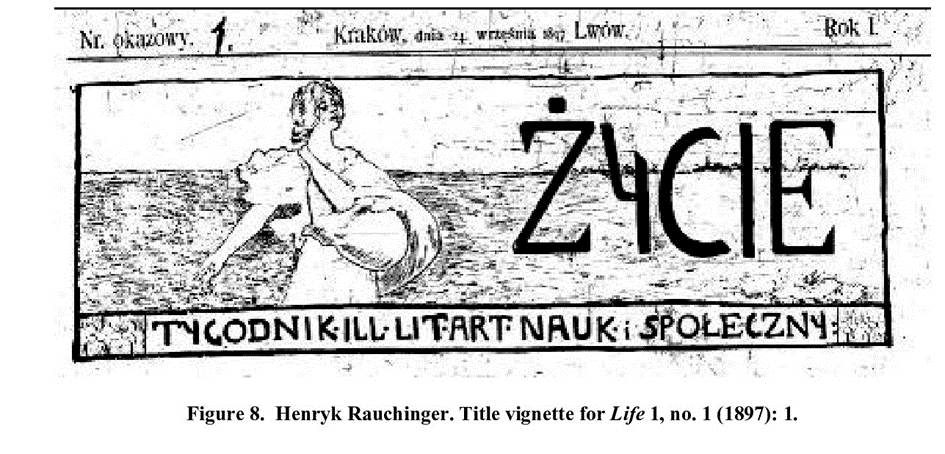
Rauchinger's artistic involvement in Life was part of a broader effort to establish a Polish voice within the modernist discourse. The journal's illustrative content, including Rauchinger's vignettes, often featured Symbolist and Art Nouveau influences, reflecting the international trends in art while embedding a distinct Polish perspective.
Throughout its publication, Life showcased a
variety of artistic styles and themes, including idealized femininity,
nostalgic landscapes, and allegorical motifs. Rauchinger and his
contemporaries, such as Stanisław Wyspiański and Teodor Axentowicz, contributed
to this rich visual program, which helped to legitimize and promote modernist
ideas within Poland.

A new question arises: Who is Dr. Jasieński?
Feliks Jasieński: A Patron of Art and Collector Extraordinaire
Feliks Jasieński, bearing the coat of arms of
Dołęga, was born on July 8, 1861, in Grzegorzewice, Poland, into the esteemed
Jasieński family. His life's journey intertwined with the rich tapestry of
Polish history, marked by his significant contributions to the world of art as
a critic and collector.
Wojciech Weiss, Portrait of Feliks Jasieński, 1903, National Museum in Krakow
Feliks's insatiable thirst for knowledge led
him to pursue higher education in Dorpat (now Tartu, Estonia). However, his
studies were cut short due to eye illness. Undeterred, he embarked on extensive
travels across Europe, Egypt, and Asia Minor, immersing himself in diverse
cultures and artistic influences. Residing at various times in Warsaw, Krakow,
and Lviv, he became an integral part of Krakow's artistic milieu, engaging with
the city's bohemian circles and participating in the famed Zielony Balonik (Green
Balloon) evenings.
An accomplished writer, Feliks Jasieński
contributed articles and essays to prominent publications such as Chimera, and
Lamus, where he served as literary director. In 1901, he published a collection
of essays titled Manggha. Promenades à travers les mondes, l'art et les idées,
showcasing his erudition and broad cultural interests. Collaborating with Adam
Cybulski-Łada, he co-authored the 1904 album “Sztuka Polska. Malarstwo” (Polish
Art. Painting), further cementing his reputation as a discerning critic and
promoter of Polish art.
Feliks Jasieński's pseudonym, Manggha, derived
from a collection of woodcuts by the Japanese artist Katsushika Hokusai,
reflected his fascination with Japanese art. His extensive travels enabled him
to amass a diverse collection of European and Japanese artworks, textiles, and
antiquities. Settling in Krakow in 1901, he emerged as a patron of the arts,
nurturing the talents of young artists and championing the modernist movement.
His eclectic collection, which included over
15,000 exhibits, was bequeathed to the city of Krakow in 1920, with the
condition that it would form an integral part of the National Museum in Krakow
and be accessible to the public. As the lifetime director of the donated
collection, he continually enriched its holdings, ensuring its significance for
future generations.
Feliks Jasieński's legacy endures through the
Manggha Centre of Japanese Art and Technology in Krakow, established with funds
from Andrzej Wajda's Kyoto Prize in 1987. Named in his honor, the center
preserves and showcases his remarkable collection, serving as a testament to
his enduring passion for art and cultural exchange.
Though Feliks Jasieński passed away on April 6,
1929, his contributions to the world of art continue to inspire and enrich the
cultural landscape of Poland and beyond. As his collection continues to
captivate audiences at the Manggha Centre, his vision of art as a bridge
between nations lives on, transcending boundaries and fostering understanding
in an ever-changing world.
Janina Jasieńska: A Partner in Passion for Art
Beside Feliks Jasieński stood Janina Jasieńska,
nee Biegel, a woman of grace and refinement whose presence illuminated the
vibrant circles of Krakow's artistic milieu. Born in 1870, Janina shared Feliks' passion for culture and creativity, enriching their shared journey
with her intellect and elegance.
Married to Feliks Jasieński in 1887, Janina played an integral role in her husband's life, providing unwavering support for his endeavors as a critic and collector. Together, they fostered an environment of artistic exploration and appreciation, hosting gatherings that brought together luminaries of the Polish cultural scene.
Janina's influence extended beyond the confines of their home, as she actively participated in cultural events and initiatives alongside Feliks. Her keen intellect and refined taste complemented Feliks' bold vision, contributing to the couple's enduring legacy as patrons of the arts.
Though her life remains somewhat veiled in the
shadows of history, Janina's presence undoubtedly enriched Feliks' journey,
serving as a steadfast companion in his pursuit of artistic excellence. In
commemorating Henryk Jasieński's legacy, let us also honor Janina's
contributions as a partner in passion for art, whose grace and elegance left an
indelible mark on the cultural landscape of Krakow and beyond.
Teresa Jasieńska and Henryk Jasieński: the
Guardians of Cultural Heritage
After the death of Janina, Feliks Jasieński married
Teresa Jasieńska, nee Łabęcka. Born into the noble Łabęcki family, Teresa
shared Feliks's passion for culture and creativity, enriching their shared
journey with her grace and elegance.
Henryk Jasieński, son of Feliks Aleksander Jan
Jasieński and Teresa Jasieńska, was born on October 9, 1888, in Kielce-Pisary.
He inherited a rich legacy of art and culture from his esteemed parents and
dedicated his life to preserving and promoting cultural heritage.
Growing up in an environment steeped in
artistic fervor, Henryk absorbed his parents' passion for creativity and
cultural exploration. Their home in Krakow served as a vibrant hub of
intellectual discourse and artistic exchange, nurturing Henryk's innate
curiosity and love for the arts from an early age.
Following in his father's footsteps, Henryk embarked on a mission to safeguard Poland's cultural heritage. With deep
reverence for art and history, he became the custodian of his family's
extensive collection, ensuring its preservation for future generations. His
commitment to cultural stewardship extended beyond the confines of his familial
legacy as he actively engaged in initiatives to protect and promote Poland's
rich artistic heritage.
In addition to his role as a guardian of
cultural heritage, Henryk was also a devoted husband to Halina Magdalena
Jasieńska, sharing with her a passion for art and culture. Together, they
continued the Jasieński family's tradition of patronage and philanthropy,
supporting various cultural endeavors and initiatives.
Henryk Jasieński's legacy is one of
unwavering dedication to preserving Poland's cultural heritage and fostering a
deeper appreciation for its artistic treasures. His tireless efforts as a
custodian of art and culture continue to enrich the cultural landscape of
Krakow and Poland, ensuring that future generations inherit a legacy of beauty,
creativity, and cultural enlightenment.
And all of this we deduced from a small stamp
with the following dimensions: hight:
3.5 cm, width: 2.8 cm. Is it worth collecting poster stamps?




.jpg)







,_1898.jpg)
.png)


.jpg)

.jpg)


_1917_10(5)k.jpg)









.jpg)





